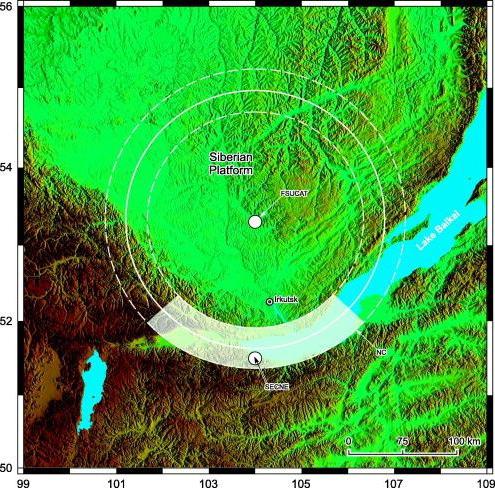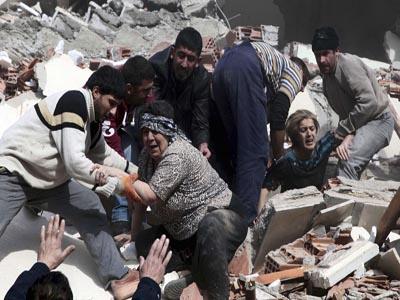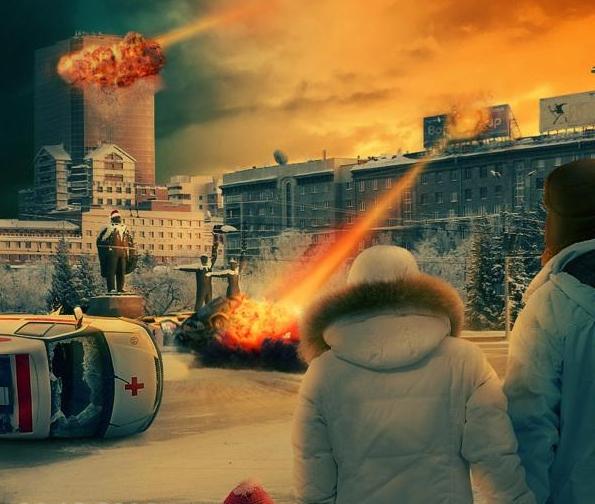On the morning of August 14, 2012, residents of the upper floors of high-rise buildings in Novosibirsk felt that the floor was swinging under their feet and the window frames were slamming. The first thing that occurred to frightened people was that their city was hit by an earthquake. Novosibirsk has stirred up a wave of calls to friends and acquaintances, as well as to the special service of the Civil Defense, which deals with emergency situations at the local city hall. However, a preliminary request to the seismologists gave a discouraging answer: no tremors under the city, and indeed in the region, instruments were not recorded.

Then the military was blamed for the tremors that happened: they say that they are disposing of old ammunition at the Shilovo training ground. The charge was too heavy to ignore, and by noon the official speaker of the Central District issued a statement that not a single shell had been detonated on the morning of August 14. True, the military admitted that they had disposed of ammunition the other day, on the 13th. However, the R-40 Destroyer system, with which shells were eliminated, reduces the blast wave by 25 times. Therefore, as the service emphasized, only residents of the villages closest to the landfill could hear muffled pops, possibly glass rattling. But this could not be the trembling of the earth, which stirred up distant Novosibirsk.
The earthquake that day was indeed, but very far from Siberia. At seven in the morning, sensors recorded tremors everywhere on Sakhalin. Their epicenter was at a depth of 500-600 kilometers in the Sea of Okhotsk, 170 kilometers from the coast of the island. Seismologists even managed to classify the strength of a natural disaster on the Richter scale - seven points. These shocks did not provoke any destruction, human casualties, or tsunami threats. And those soil vibrations described by residents of the largest city in Siberia fit into about 2-3 points. So was there an earthquake in Novosibirsk, or was it an echo of a natural disaster in the Sea of Okhotsk?

For a long time it was believed that the region of Southern Siberia was not dangerous in terms of tremors. But with the installation of seismological stations near the city, scientists redefined their opinions. It turns out that between Novosibirsk and Berdsk quite often minor (1-2 points) tremors occur. And where it’s subtle, it breaks, as popular wisdom says. If small tremors occur, someday a major earthquake in Novosibirsk will surely happen.
In the spirit of expectation of the End of the World, residents of the unofficial capital of Siberia began anxiously to expect the onset of December 2012, especially on the 21st. However, "Day X" was not overshadowed by any natural disasters. But since January 2013, the Altai-Sayan Geophysical Service regularly began to receive notifications of tremors threatening the region. So, the earthquake in Novosibirsk occurred on January 24. Its epicenter with a power of 5 points was located in Gorny Altai, while a wave of 2 points, which lasted a couple of seconds, reached the city. On February 10, a new surprise happened: again 1-2 points, but this time there were echoes from Khakassia, where the power of the cataclysm exceeded six points.

The last time the city was a little shocked on February 26, 2013. On this day, the seismological service recorded another earthquake in Novosibirsk. Like all past ones, it was expressed in the swing of chandeliers and the feeling that the floor was leaving under the feet. The strongest shocks were recorded in 2003. Then the relay tower - the tallest building in the city - rocked for several minutes.